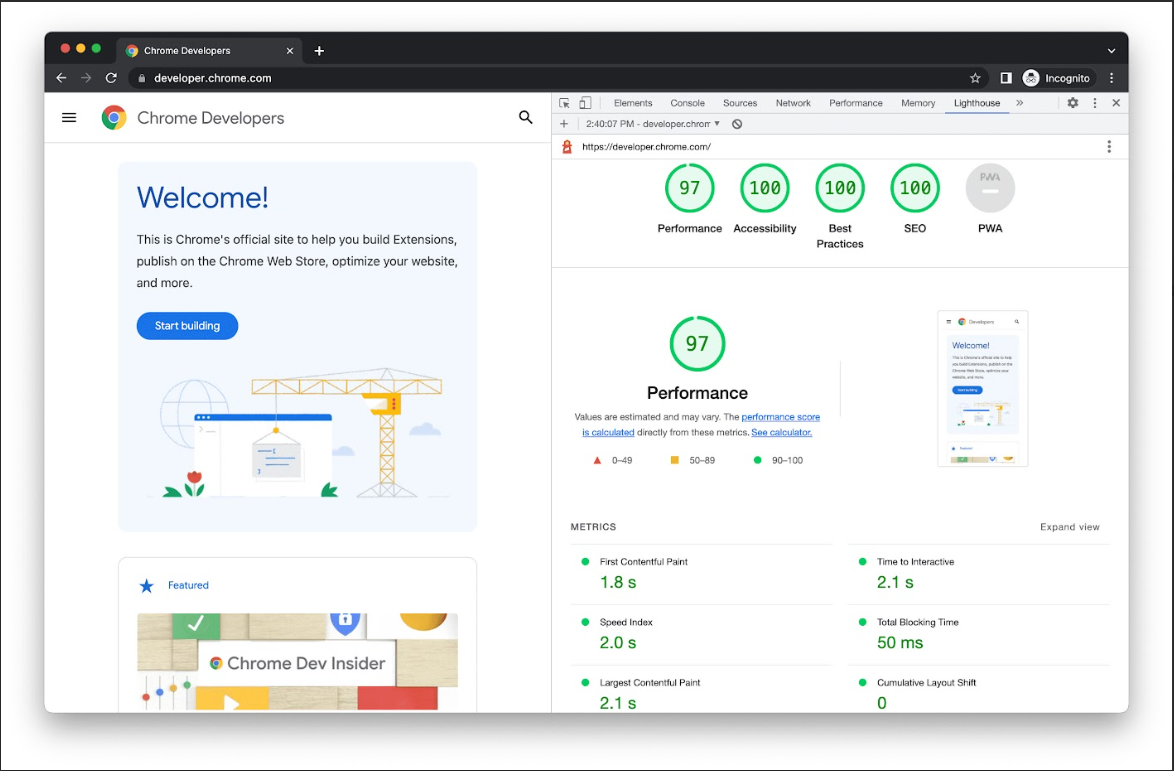How to Stay Resilient and Navigate Google's Algorithm Updates
Have you seen sudden changes in your website’s performance?
There’s a high chance that these might be the after effects of Google’s algorithm update.
These updates are nothing new; they’re part of Google’s continuous efforts to enhance user experience.
In fact, in March 2024, Google launched one of its biggest and most complex core algorithm updates yet (see image below).

Image via Google Search Central
Google’s algorithm updates can impact your site’s SEO traffic and rankings. However, with the right strategies, you can not only navigate these changes but thrive.
In this article, I’ll guide you on how to stay resilient and navigate Google’s Algorithm updates.
But first, let’s understand these updates and why they’re important.
Understanding Google’s Algorithm Updates
Google algorithm updates refer to the changes made to the complex rules that determine how websites are ranked in search results.
These updates are released by Google, about 3–4 times a year, with a primary goal of enhancing user experience by displaying high-quality, relevant, and valuable content.
They can be categorized into three main classes, depending on their scope and impact:
Core Updates: Substantial and wide-ranging changes that aim to improve the overall quality of search results by reassessing how content is ranked. They can greatly affect website rankings, resulting in notable changes in search visibility.
Major updates: Significant algorithm changes that target specific aspects of improving the search quality. They normally focus on addressing issues like spammy content, user experience, and mobile friendliness.
Minor updates: Smaller changes that fine-tune certain elements of the algorithm. While they might not create major fluctuations, they reflect Google’s continuous effort to improve user experience and search relevance.
Now that you understand the various types of Google updates, let’s see how these changes can affect your website.
The Impacts of Google Algorithm Updates on Your Website
Understanding the impact of Google algorithm updates on your website is crucial if you want to maintain a strong online presence.
Here are a few ways that these updates can affect your website.
1. Content Relevance and Quality
Google algorithm updates aim to improve the quality and relevance of content to ensure that site users receive the most useful and accurate information possible. Websites with thin, duplicate, or low-value content may witness a decline in rankings after an update.
According to the Attrock guide, marketers can improve your search rankings by following the best SEO practices such as creating high-quality content and adhering to top SEO practices.
2. Traffic Variations
When your search rankings change, the amount of organic traffic your website receives will also change. For instance, a positive update that favors your site will result in increased organic traffic, leading to better engagement and conversations.
On the other hand, a negative algorithm impact can result in a substantial drop in organic traffic, leading to decreased engagement and lower conversion rates.
3. Fluctuations in Search Rankings
One of the most immediate and noticeable impacts of Google algorithm updates is the fluctuations in search rankings. These changes can be sudden and dramatic, affecting your site’s SERP visibility.
The shifts can be attributed to various factors, including changes in how Google evaluates content quality, relevance, and backlinks. Understanding these shifts will help you create an effective SEO strategy.
Now, let’s look into how you can stay resilient and navigate these updates.
5 ways to Stay Resilient and Navigate Google's Algorithm Updates
By embracing the changes that result from Google's algorithm updates, you can ensure that you’re aligned with search engine standards and your online presence remains competitive.
Below are our top five tips on how to stay resilient and navigate Google’s algorithm updates.
1. Focus on Creating High-Quality, Relevant Content
Google always prioritizes websites that create helpful, relevant content.
That’s why your main goal should be to produce high-quality, relevant, and informative content consistently.
Content that is user-friendly, engaging, and has the necessary links and keywords tends to rank well on Google SERP.
The following tips can help you create such high-quality content:
Make your content relevant by aligning it with the needs and interests of your target audience. Tools like keyword research and Google Trends can help you understand what your audience is looking for.
Establish yourself as an expert in your industry. You can do this by adding credible sources to your blogs, providing accurate information, and citing authoritative references.
Ensure that your content is easy to read and navigate. Use bullet points, headings, and images to break up texts and enhance readability.
Adding social proof, such as reviews, to your website can further help improve your content’s perceived quality and trustworthiness.
One effective method is to embed Google reviews on your website. Positive reviews from your customers can reinforce your credibility and encourage new visitors to trust your content and services.
2. Optimize Your Site for Mobile Devices
Google aims to provide a positive experience to all users, including those who access it via mobile devices. That’s why it implemented a mobile-friendly algorithm.
It assesses the mobile-friendliness of websites to determine their rankings in mobile search results.
If your website meets the criteria for mobile-friendliness during an update, it will be rewarded with higher visibility. But if it falls short, it may experience a decline in ranking.
This simply means that you can’t perform well on the SERP without a mobile-friendly website.
So, ensure that your website offers an excellent user experience on mobile phones. You can do this by:
Implementing a responsive design: This will enable your site to adapt seamlessly to various screen sizes and orientations, ultimately providing a consistent and user-friendly experience.
Optimizing your site’s loading speed for mobile devices: Do this by compressing images to reduce file sizes or enabling browser caching to store static resources locally for site users.
Improving the overall user experience: This can be done by prominently displaying CTAs, making buttons and links large enough for easier tapping, or making navigation menus easily accessible.
Mobile-friendly sites aren’t just user-friendly but reflect the quality of website design that Google is looking for. They send a message that your website is smart enough to quickly identify the type of device accessing it and adaptable enough to be used on that device.
You can test your site’s level of mobile-friendliness using Google’s official mobile-friendly test. This tool will deploy search engine crawlers to your site to rank it on how well it can be used or accessed on a mobile device (see image below).

Image via Chrome Developers
3. Create a Diverse and Adaptable Content Strategy
SEO’s landscape is constantly changing. That’s why you need to be flexible and adaptable if you want to maintain strong search rankings amid Google’s algorithm updates.
After an update, it’s wise to assess how your content aligns with the new criteria. Start by analyzing your existing content and identifying areas of improvement.
Understanding and comparing metrics like reach vs. impression will help guide your content strategy. While reach refers to the number of unique users who view your content, impression counts the total number of times your content is displayed, regardless of clicks.
Monitoring these metrics can help you determine whether your content is effectively reaching a wider audience and being viewed many times.
You can also effectively adapt your content strategy by:
Incorporating other media elements like blogs, videos, and infographics.
Regularly updating and refreshing your content to stay competitive.
Using the best Chrome extensions to help in content creation and optimization.
Diversifying your content portfolio will increase engagement and improve your website’s appeal to both your site users and Google.
So, consider distributing your content across various platforms. Through social marketing, guest blogging, and drip email campaign marketing, you can maximize your reach and engage better with your audience.
You can even utilize an ad platform to reuse your content and reach a targeted audience. Paid ads on platforms like Google Ads, LinkedIn Ads, and Facebook Ads can help drive additional traffic to your site while letting you avoid relying purely on organic search traffic.
4. Enhance Technical SEO
To avoid penalties from Google’s algorithm updates, your website needs to be technically sound. If search engine crawlers go through your site and find broken links, 404 errors, and navigational pages leading them nowhere, your site’s ranking will be affected.
That’s why you should ensure that your website is accessible, well-coded, and running smoothly at all times.
This is not just important for search engines, but for your customer satisfaction as well. A broken website, for instance, won’t show up to your potential customers. But even if they find it, they won’t be able to navigate it.
You can ensure that your website works effectively by:
Making it easily crawlable, so Google can discover and index your content efficiently.
Organizing your content in a hierarchical manner, with main categories and subcategories.
Optimizing your site’s page speed by compressing images and enabling browser caching.
5. Build High-Quality Backlinks
Backlinks continue to play a crucial role in SEO and website ranking. They signal to Google that your content is authoritative and valuable, boosting your search rankings.
There are various ways you can acquire high-quality backlinks. One such way is guest blogging, which involves writing high-quality blog posts for reputable websites in your industry.
To secure guest blogging opportunities, begin by identifying websites with high domain authority. Then, pitch topics that are relevant to the host’s site and their audience.
Once your pitch is accepted, write valuable, high-quality guest posts that address your audience’s needs and interests. Add links to relevant resources on your website to drive referral traffic and build authority.
However, guest blogging is not the only way to build quality backlinks. You can also consider:
Collaborating with industry influencers, brands, or content creators to create and share content that benefits both parties.
Creating in-depth guides, lists of useful tips, and resources that will serve as a go-to reference for important industry topics.
Using the skyscraper technique to create content that’s significantly better than the top-performing content on a certain topic.
Wrapping Up
Learning how to stay resilient and navigate Google’s algorithm updates requires a proactive approach and a keen understanding of the evolving SEO strategies.
By following the above-mentioned tips, you can effectively navigate the changes brought about by Google’s frequent algorithm updates.
So stay focused, stay innovative, and stay informed on your audience’s needs. With these principles, you won’t fear any future algorithm updates. Instead, you’ll meet them with confidence and the ability to rise to the top of search ranks.
Author Bio - Reena Aggarwal
Reena is Director of Operations and Sales at Attrock, a result-driven digital marketing company. With 10+ years of sales and operations experience in the field of e-commerce and digital marketing, she is quite an industry expert. She is a people person and considers the human resources as the most valuable asset of a company. In her free time, you would find her spending quality time with her brilliant, almost teenage daughter and watching her grow in this digital, fast-paced era.

